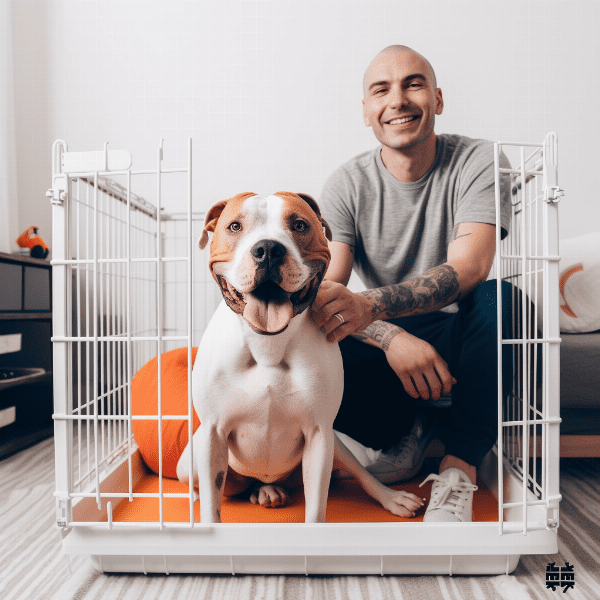Table of Contents
- Understanding Aggression in Pitbulls
- Identifying the Triggers of Aggression
- How to Train an Aggressive Pitbull
- Effective Socialization Techniques
- Using Positive Reinforcement to Modify Behavior
- Addressing Aggression towards People
- Dealing with Aggression towards Other Animals
- The Role of Exercise and Mental Stimulation
- Seeking Professional Help: When to Consult a Trainer or Behaviorist
- Maintaining a Safe and Happy Environment for Your Pitbull
Understanding Aggression in Pitbulls
Understanding why your pitbull is displaying aggressive behavior is the first step in addressing it. In some cases, aggression is rooted in genetics, while in other cases, it may be due to a lack of proper training or socialization. Here are some key factors to consider when trying to understand your pitbull’s aggression:
Nature vs. Nurture
While there is a genetic component to aggression in some dog breeds, such as the pitbull, environmental factors also play a significant role. A pitbull that is not properly socialized or trained may be more likely to exhibit aggressive behavior, regardless of their genetic makeup.
Fear and Anxiety
Fear and anxiety can also contribute to aggressive behavior in pitbulls. If a dog feels threatened or insecure, they may react aggressively to protect themselves. In some cases, this may be due to past traumatic experiences, while in others, it may be a result of a lack of exposure to different people, animals, and environments.
Territorial Aggression
Territorial aggression is another common cause of aggression in pitbulls. Dogs that are overly possessive of their space or belongings may display aggressive behavior towards people or other animals that they perceive as a threat to their territory. This can be particularly problematic if the dog is not properly socialized, as they may view anyone who enters their space as a threat.
Redirected Aggression
Redirected aggression occurs when a dog is unable to direct their aggression towards the source of their frustration, and instead redirects it towards an unrelated target. For example, if a dog is barking at a squirrel outside and becomes frustrated, they may redirect their aggression towards a person or another animal that happens to be nearby.
By understanding the underlying causes of aggression in pitbulls, you can better address the behavior and work towards modifying it. In the next section, we’ll take a look at how to identify the triggers of aggression in your pitbull.

Identifying the Triggers of Aggression
Identifying the triggers that cause your pitbull’s aggressive behavior is essential to managing and modifying the behavior. While the triggers may vary from dog to dog, here are some common factors that can contribute to aggressive behavior:
Fearful Situations
Fearful situations are one of the most common triggers of aggression in pitbulls. For example, a dog that is afraid of strangers may become aggressive when approached by unfamiliar people. Similarly, a dog that is afraid of loud noises may become aggressive when exposed to sudden, loud sounds.
Resource Guarding
Resource guarding is another common trigger of aggression in pitbulls. Dogs that are possessive of their food, toys, or other objects may become aggressive if they feel like their possessions are being threatened.
Lack of Socialization
A lack of socialization can also contribute to aggressive behavior in pitbulls. Dogs that are not exposed to a variety of people, animals, and environments may become fearful or anxious in unfamiliar situations, leading to aggressive behavior.
Pain or Illness
Pain or illness can also cause a dog to become aggressive. If a dog is in pain, they may become defensive or aggressive when touched or approached. Similarly, if a dog is experiencing an illness that affects their behavior or mood, they may display aggressive behavior.
Hormonal Changes
Hormonal changes can also contribute to aggressive behavior in pitbulls. Dogs that are not spayed or neutered may be more likely to display aggressive behavior, particularly towards other dogs of the same sex.
By identifying the triggers that cause your pitbull’s aggressive behavior, you can take steps to manage and modify the behavior. In the next section, we’ll take a look at how to train an Aggressive pitbull.
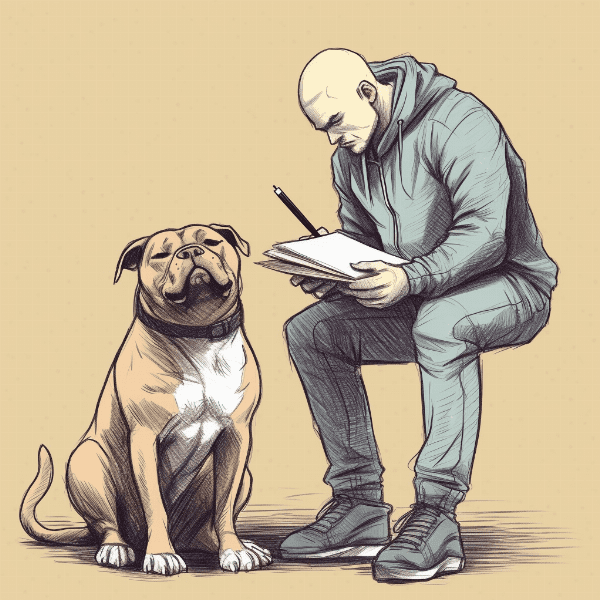
How to Train an Aggressive Pitbull
Training an aggressive pitbull requires patience, consistency, and a clear understanding of the behavior you want to modify. Here are some tips to help you train your pitbull to overcome their aggressive tendencies:
Counterconditioning
Counterconditioning is a technique used to modify a dog’s negative emotional response to a trigger. For example, if your pitbull becomes aggressive when they see other dogs, you can use counterconditioning to help them associate other dogs with positive experiences. This can involve giving them treats or praise when they see other dogs from a distance, gradually decreasing the distance over time.
Desensitization
Desensitization is another technique used to modify a dog’s emotional response to a trigger. This involves gradually exposing your pitbull to the trigger in a controlled environment, starting at a distance where they do not exhibit aggressive behavior. Over time, you can gradually decrease the distance, allowing your pitbull to become more comfortable with the trigger.
Avoid Punishment
Punishing an aggressive pitbull can actually make the behavior worse. This can increase the dog’s fear and anxiety, leading to more aggressive behavior. Instead, focus on rewarding good behavior and redirecting your dog’s attention away from the trigger.
Consistency
Consistency is key when training an aggressive pitbull. This involves setting clear boundaries and expectations for your dog’s behavior, and enforcing these consistently. It’s also important to be patient and persistent, as modifying behavior can take time.
By using positive reinforcement, counterconditioning, and desensitization, and avoiding punishment, you can train your aggressive pitbull to exhibit more positive behaviors. In the next section, we’ll take a look at effective socialization techniques for pitbulls.
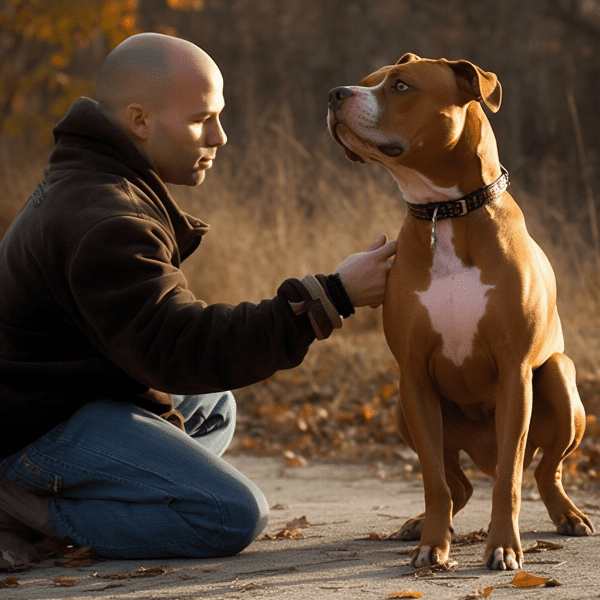
Effective Socialization Techniques
Socialization is an important aspect of training for all dogs, and it’s especially important for pitbulls. Proper socialization can help prevent aggressive behavior and make your pitbull more confident and well-adjusted. Here are some effective socialization techniques for pitbulls:
Early Socialization
Early socialization is key for pitbulls. Puppies should be exposed to a variety of people, animals, and environments from a young age. This can help them become comfortable and confident in new situations, reducing the likelihood of fearful or aggressive behavior.
Controlled Exposure
When socializing your pitbull, it’s important to expose them to new situations gradually and in a controlled environment. This can involve taking them to a quiet park or introducing them to one new person or animal at a time. Over time, you can gradually increase the level of exposure, allowing your pitbull to become more comfortable with new situations.
Positive Reinforcement
Positive reinforcement can also be used during socialization to help your pitbull associate new experiences with positive outcomes. This can involve giving them treats or praise when they meet new people or animals, or when they experience new environments.
Exposure to Different Types of People and Animals
Pitbulls should be exposed to a variety of people and animals during socialization. This can include people of different ages, genders, and ethnicities, as well as different types of animals, such as cats, dogs, and farm animals. This can help your pitbull become comfortable and confident around different types of people and animals.
Ongoing Socialization
Socialization is an ongoing process, and it’s important to continue exposing your pitbull to new situations throughout their life. This can involve taking them to new places, introducing them to new people and animals, and providing them with opportunities to learn and explore.
By using early socialization, controlled exposure, positive reinforcement, exposure to different types of people and animals, and ongoing socialization, you can help your pitbull become a confident, well-adjusted, and non-aggressive dog. In the next section, we’ll take a look at using positive reinforcement to modify behavior in pitbulls.

Using Positive Reinforcement to Modify Behavior
Positive reinforcement is a powerful tool for modifying behavior in pitbulls. This involves rewarding your dog for good behavior, rather than punishing them for bad behavior. Here are some tips for using positive reinforcement to modify behavior in your pitbull:
Consistency
Consistency is also important when using positive reinforcement. The reward should be given every time the desired behavior is exhibited, so that the dog understands that the behavior is always rewarded.
Types of Rewards
The type of reward used for positive reinforcement can vary, depending on what motivates your pitbull. Some dogs respond well to treats, while others prefer praise or playtime. Experiment with different types of rewards to see what works best for your dog.
Shaping Behavior
Shaping behavior involves breaking down a complex behavior into smaller steps, and rewarding each step along the way. This can be particularly effective for modifying behavior in pitbulls, as it allows you to reward even small steps towards the desired behavior.
Fading Rewards
Over time, you can gradually decrease the frequency of rewards, once the behavior has become more established. This can help your pitbull learn to exhibit the behavior without the need for constant rewards.
By using positive reinforcement to modify behavior in your pitbull, you can help them develop more positive behaviors and reduce the likelihood of aggressive behavior. In the next section, we’ll take a look at addressing aggression towards people in pitbulls.
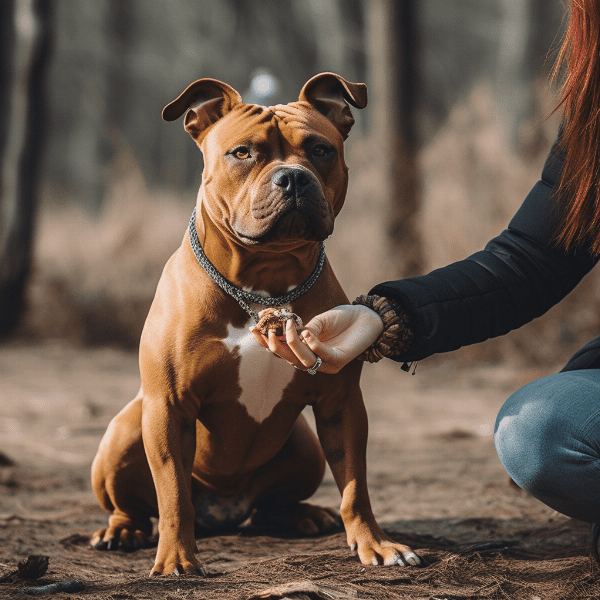
Addressing Aggression towards People
Aggression towards people is a serious issue that needs to be addressed promptly and effectively in pitbulls. Here are some tips for addressing aggression towards people in your pitbull:
Consider Medication
In some cases, medication may be recommended to help address aggression towards people in pitbulls. This should only be done under the guidance of a veterinarian or veterinary behaviorist.
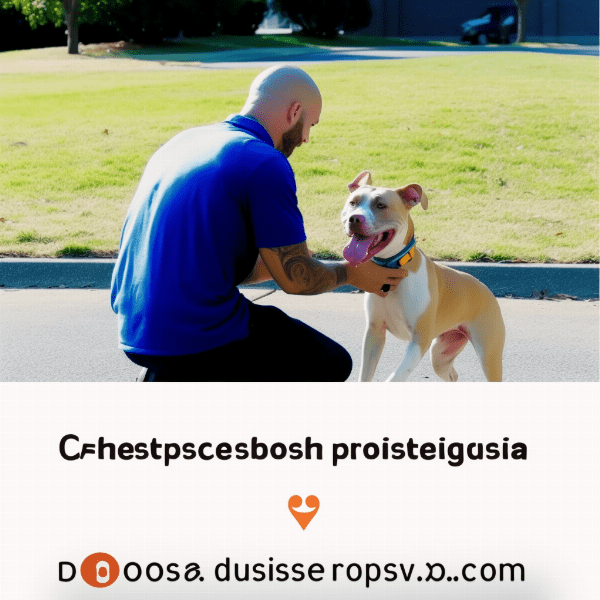
Dealing with Aggression towards Other Animals
Aggression towards other animals is another common issue that pitbull owners may face. Here are some tips for dealing with aggression towards other animals in your pitbull:
Identify the Triggers
As with aggression towards people, the first step in addressing aggression towards other animals is to identify the triggers that cause the behavior. This can involve observing your pitbull’s behavior around other animals, and taking note of when the aggression occurs.
Train and Socialize
Training and socialization are also important tools for addressing aggression towards other animals. By using positive reinforcement to train your pitbull to exhibit more positive behaviors around other animals, and by exposing them to a variety of animals during socialization, you can help reduce the likelihood of aggressive behavior.
Manage the Environment
Managing the environment can also be helpful in addressing aggression towards other animals. This can involve keeping your pitbull on a leash or in a separate room when other animals are present, or providing a safe space for your pitbull to retreat to if they become overwhelmed.
Consider Muzzle Training
Muzzle training can be a helpful tool for managing aggression towards other animals in pitbulls. This involves teaching your pitbull to wear a muzzle, which can help prevent them from biting or attacking other animals.
Seek Professional Help
By identifying the triggers, training and socializing your pitbull, managing the environment, considering muzzle training, and seeking professional help if necessary, you can effectively address aggression towards other animals in your pitbull.
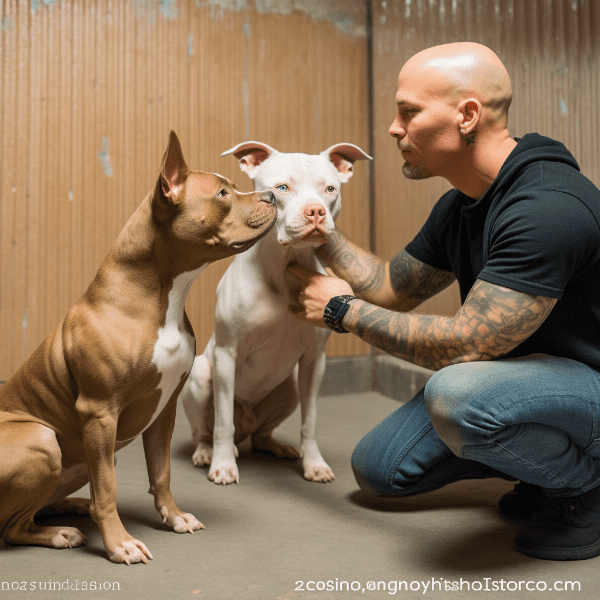
The Role of Exercise and Mental Stimulation
Exercise and mental stimulation are important factors in maintaining a healthy and well-behaved pitbull, and can also help reduce the likelihood of aggressive behavior. Here are some ways exercise and mental stimulation can help:
Physical Exercise
Regular physical exercise can help reduce stress and anxiety in pitbulls, which can in turn reduce the likelihood of aggressive behavior. Activities such as brisk walks, runs, and games of fetch can help burn off excess energy and keep your pitbull physically fit.
Mental Stimulation
Mental stimulation is also important for pitbulls, as it can help prevent boredom and destructive behavior. Activities such as puzzle toys, obedience training, and nose work can help provide mental stimulation for your pitbull.
Training
Training itself can also be a form of mental stimulation for pitbulls. Regular training sessions can help keep your pitbull’s mind engaged and prevent boredom, as well as reinforce positive behaviors and reduce the likelihood of aggressive behavior.
Aggression Release
Providing opportunities for your pitbull to release aggression in a safe and controlled manner can also be helpful. Activities such as tug-of-war, wrestling, and bite work can provide an outlet for your pitbull’s natural instinct to bite and release energy.
Socialization
Socialization with other dogs can also provide exercise and mental stimulation for pitbulls, as well as help reduce the likelihood of aggressive behavior towards other animals.
By providing regular physical exercise, mental stimulation, training, aggression release, and socialization, you can help keep your pitbull healthy, well-behaved, and less likely to exhibit aggressive behavior.
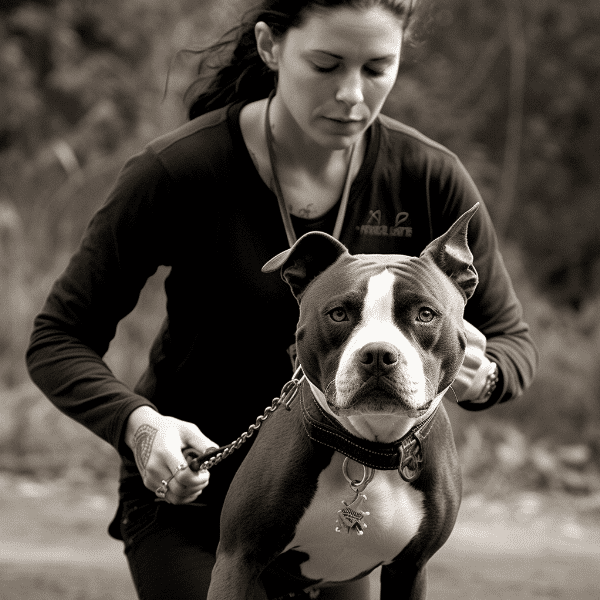
Seeking Professional Help: When to Consult a Trainer or Behaviorist
While many of the techniques and strategies we’ve discussed can be effective in addressing aggression in pitbulls, there may be cases where professional help is needed. Here are some signs that it may be time to consult a certified dog trainer or behaviorist:
Aggression is Getting Worse
If your pitbull’s aggression is getting worse over time, rather than improving, it may be time to seek professional help. A certified dog trainer or behaviorist can help identify the underlying causes of the behavior and develop a plan to modify it.
Aggression is Dangerous
If your pitbull’s aggression is putting people or other animals in danger, it’s important to seek professional help immediately. A certified dog trainer or behaviorist can work with you and your pitbull to develop a plan to manage the behavior and keep everyone safe.
Other Methods Aren’t Working
If you’ve tried other methods of addressing aggression in your pitbull, such as positive reinforcement, socialization, and environmental management, and they haven’t been effective, it may be time to seek professional help.
Aggression is Interfering with Daily Life
If your pitbull’s aggression is interfering with your daily life, such as preventing you from taking them on walks or having visitors over, it may be time to seek professional help.
You’re Not Sure What to Do
If you’re not sure how to address your pitbull’s aggression, or if you’re feeling overwhelmed or unsure about the situation, a certified dog trainer or behaviorist can provide guidance and support.
By recognizing the signs that it may be time to seek professional help, you can ensure that your pitbull receives the care and support they need to address their aggressive behavior.
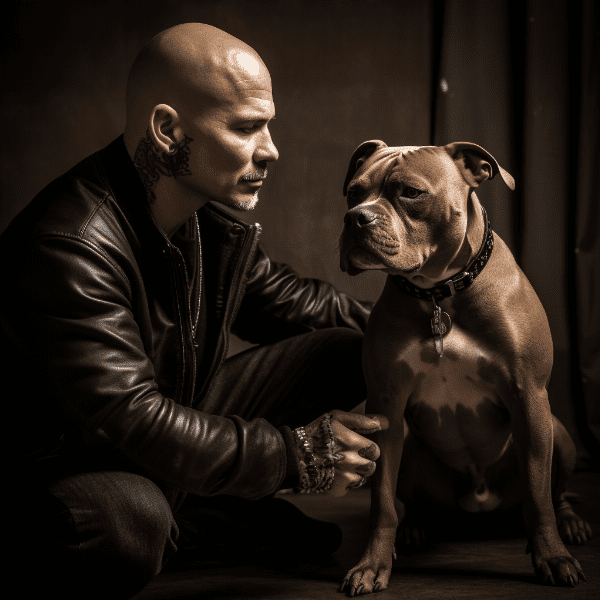
Maintaining a Safe and Happy Environment for Your Pitbull
Maintaining a safe and happy environment for your pitbull is essential for their well-being and can also help prevent aggressive behavior. Here are some tips for maintaining a safe and happy environment for your pitbull:
Provide a Safe Space
Providing your pitbull with a safe space where they can retreat when they feel overwhelmed or anxious can be helpful in reducing the likelihood of aggressive behavior. This can be a crate, a separate room, or a designated area with a bed or blankets.
Supervise Interactions
Supervising interactions between your pitbull and other people or animals is important for preventing aggressive behavior. This can involve keeping your pitbull on a leash or in a separate room when visitors come over, or monitoring interactions between your pitbull and other animals.
Secure Your Home and Yard
Securing your home and yard can also help prevent aggressive behavior in pitbulls. This can involve using secure gates and fences to prevent your pitbull from escaping, as well as ensuring that your pitbull is always supervised when outside.
Provide Plenty of Exercise and Mental Stimulation
Providing your pitbull with plenty of exercise and mental stimulation is important for maintaining a happy and healthy environment. Activities such as walks, runs, puzzle toys, and obedience training can help provide exercise and mental stimulation for your pitbull.
Regular Veterinary Check-Ups
Regular veterinary check-ups can also help maintain a safe and happy environment for your pitbull. This can involve ensuring that your pitbull is up-to-date on vaccinations and preventative care, as well as addressing any health concerns that may contribute to aggressive behavior.
By providing a safe space, supervising interactions, securing your home and yard, providing exercise and mental stimulation, and ensuring regular veterinary check-ups, you can help maintain a safe and happy environment for your pitbull and reduce the likelihood of aggressive behavior.
